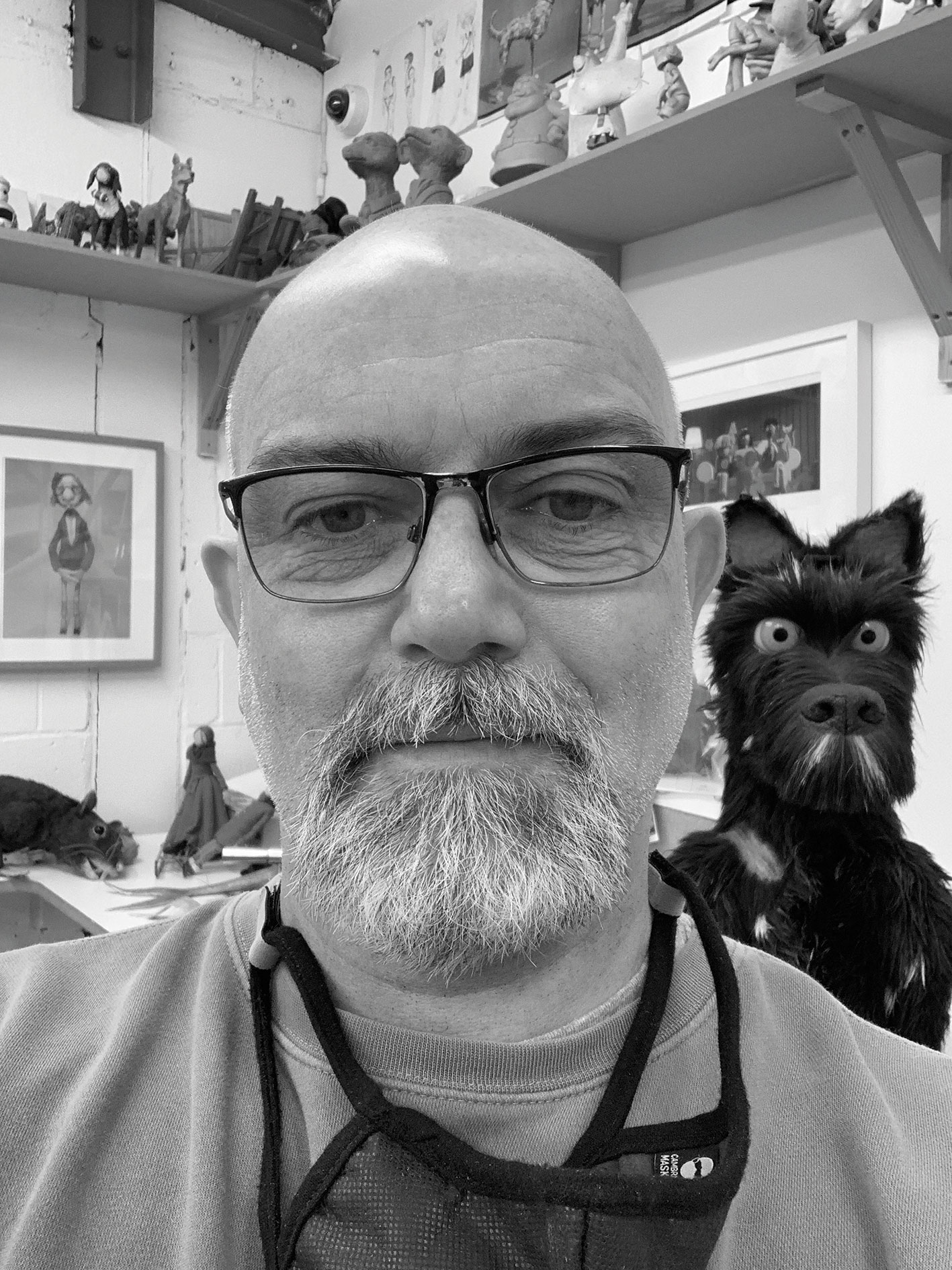My dad was a cabinet maker and the village funeral director. He was an apprentice to high-end furniture makers and then went into the Royal Air Force, where he was in charge of the department that adapted airplanes. He had a mixture of metal and woodworking skills, so from a young age I was taught how to use machinery and make my own toys. If I wanted to build something, I could just go into the workshop, which was at the bottom of the garden.
I wasn’t sure what I wanted to do but I liked history and art, so I went on to study graphics and illustration at Kingston University. Channel 4 used to have a series called Four-Mations that showed animated films. That’s where I saw [the 1991 stop-motion short film] The Sandman, which was super influential. I saw an interview with the creators and that was my eureka moment, where I understood this is what I wanted to do.
There were no courses for stop-motion animation but I made my own short film at university. I worked as a runner on a stop-motion commercial and by the end of that first week I got my first animation job.
Later I got to work on [Tim Burton’s 2005 film] Corpse Bride. There was an animator called Phil Dale who animated the piano sequence in the film. It was amazing because you felt like the characters were real. That was my first moment on a set where I was like, this is pretty special.
After Corpse Bride, I felt like I knew what I was doing, but then I got an opportunity to work with Wes Anderson. Wes did something different with stop-motion – he made it more real and reinvented it. On [Anderson’s 2009 film] Fantastic Mr Fox, we had to sort of relearn everything.
It was challenging, but I went on to work on The Grand Budapest Hotel, Isle of Dogs and, most recently, The French Dispatch.
 With Isle of Dogs, Wes sent me a video clip of these traditional Japanese drummers and asked me to watch it before reading the script. Then he gave me 40 films to watch as homework. There must have been nearly 30 films I’d never heard of. When you work with Wes, you go on a journey – but by the end, you’re ready to take on this world.
With Isle of Dogs, Wes sent me a video clip of these traditional Japanese drummers and asked me to watch it before reading the script. Then he gave me 40 films to watch as homework. There must have been nearly 30 films I’d never heard of. When you work with Wes, you go on a journey – but by the end, you’re ready to take on this world.
At the beginning of 2020, my studio in Hackney [Arch Model Studio] had just finished an ad and I remember saying, alright everybody, see you next Christmas – thinking that as usual, it would be the last time we opened the workshop for a while. But a week later I got a call for a new project, and they kept coming. Then it was just an explosion. Last year was the busiest year we ever had.
One of our most challenging projects was an ad for Beagle Street. We had only three-and-a-half weeks to build everything before Christmas and in the middle of a pandemic. We worked round the clock to get it done because we had hundreds of things to make. There were lots of Easter eggs hidden in the model village to make people laugh. We looked at it like, what if this house was your house – how would you decorate it? The Victorian terrace was straight out of my village in Derbyshire where I grew up.
The pandemic meant that a lot of people looked at other ways of filming because of the challenges of live action. There are more people trying animation now and new directors in the space.
When I started in stop-motion back in 1994, the UK’s community was quite small. On Corpse Bride, we used to joke that we got to work on the last stop-motion film. But now, because of the simplicity of new cameras and software, you can get into animation using just an iPhone. It’s gone from being a little community to a big global one.
Most people in stop-motion animation are like-minded souls. It comes back to when you were a kid and you would invest life into inanimate things. That’s what animation does – its very meaning is to breathe life. Everybody’s imagination can run wild.
As told to Brittaney Kiefer
Andy Gent is a puppet and model maker who owns the stop-motion and film studio Arch Model Studio in London. He is best known for his work on Wes Anderson films, including Isle of Dogs, Fantastic Mr Fox and the forthcoming The French Dispatch. He has also created work for brands such as the Humane Society (main picture) and Beagle Street, as well as the John Lewis & Partners and Waitrose & Partners 2020 Christmas campaign.

